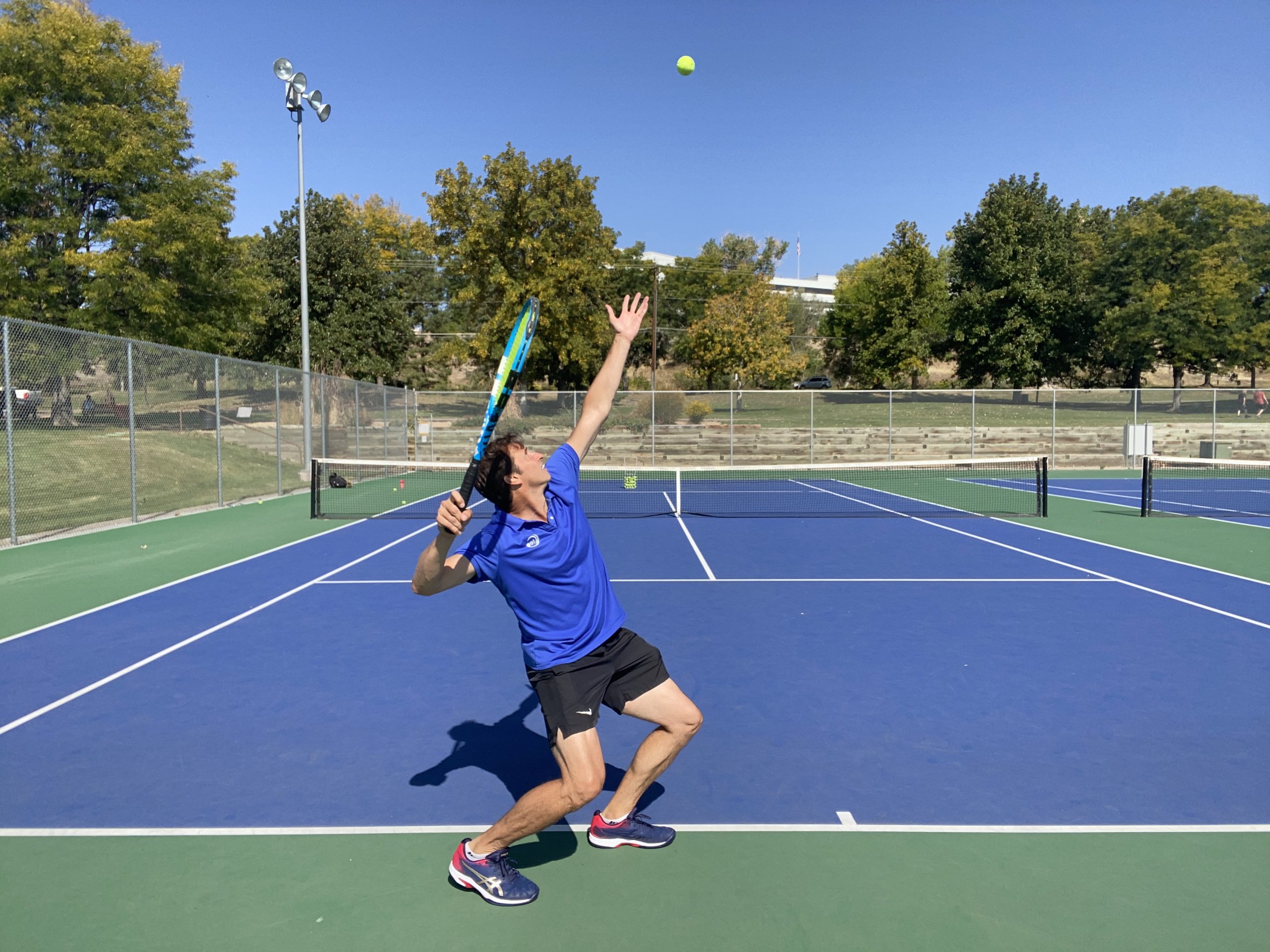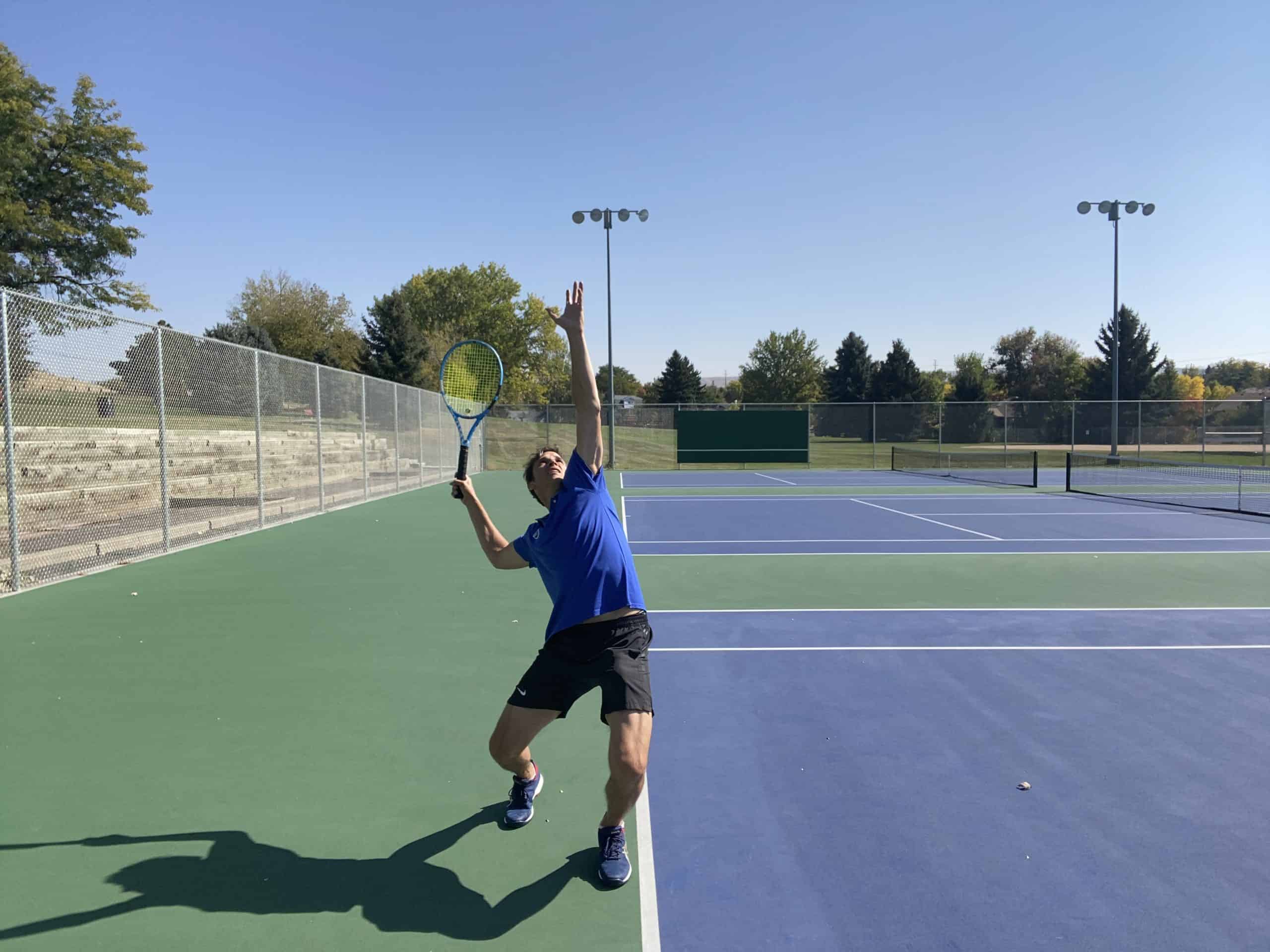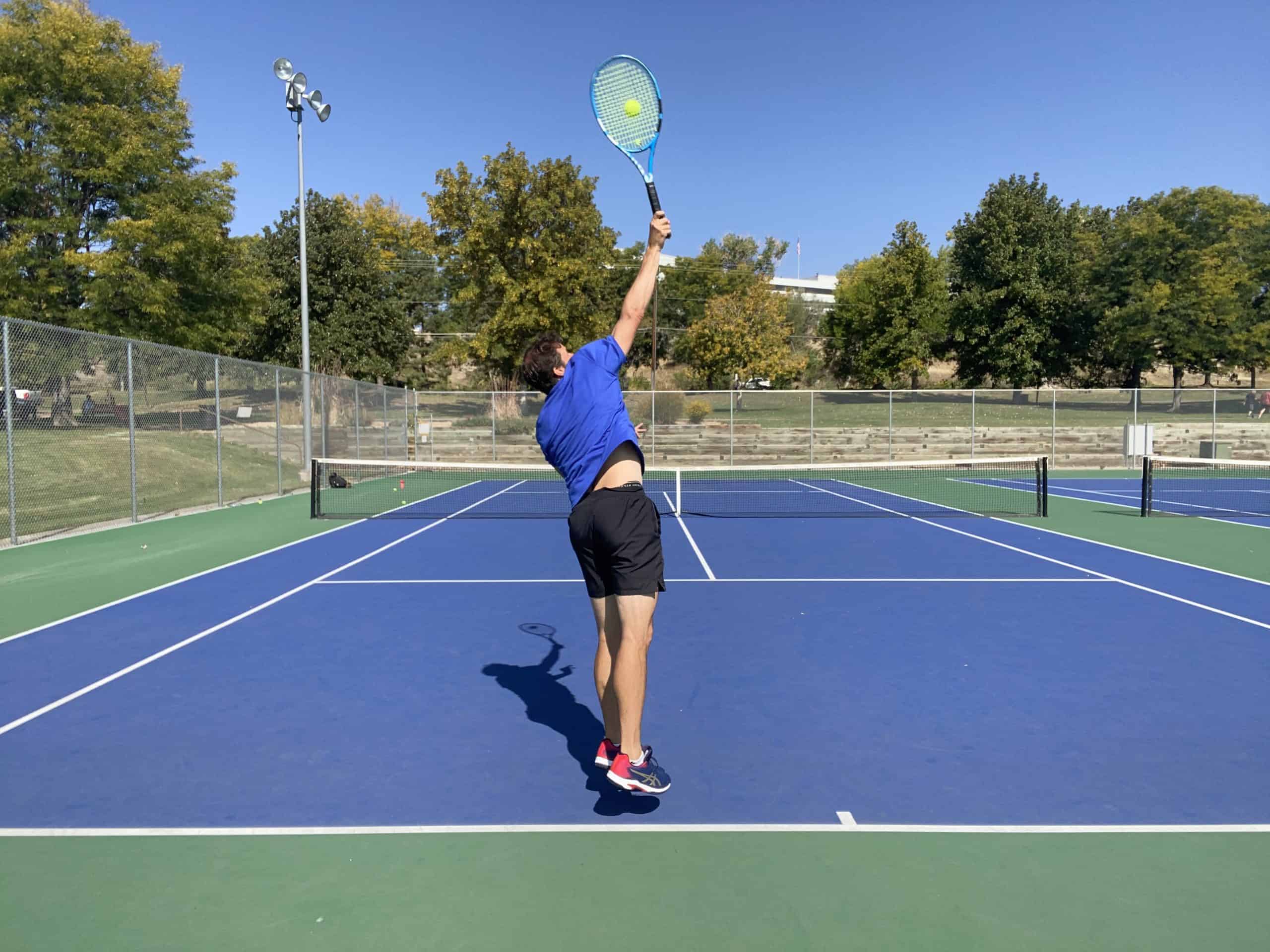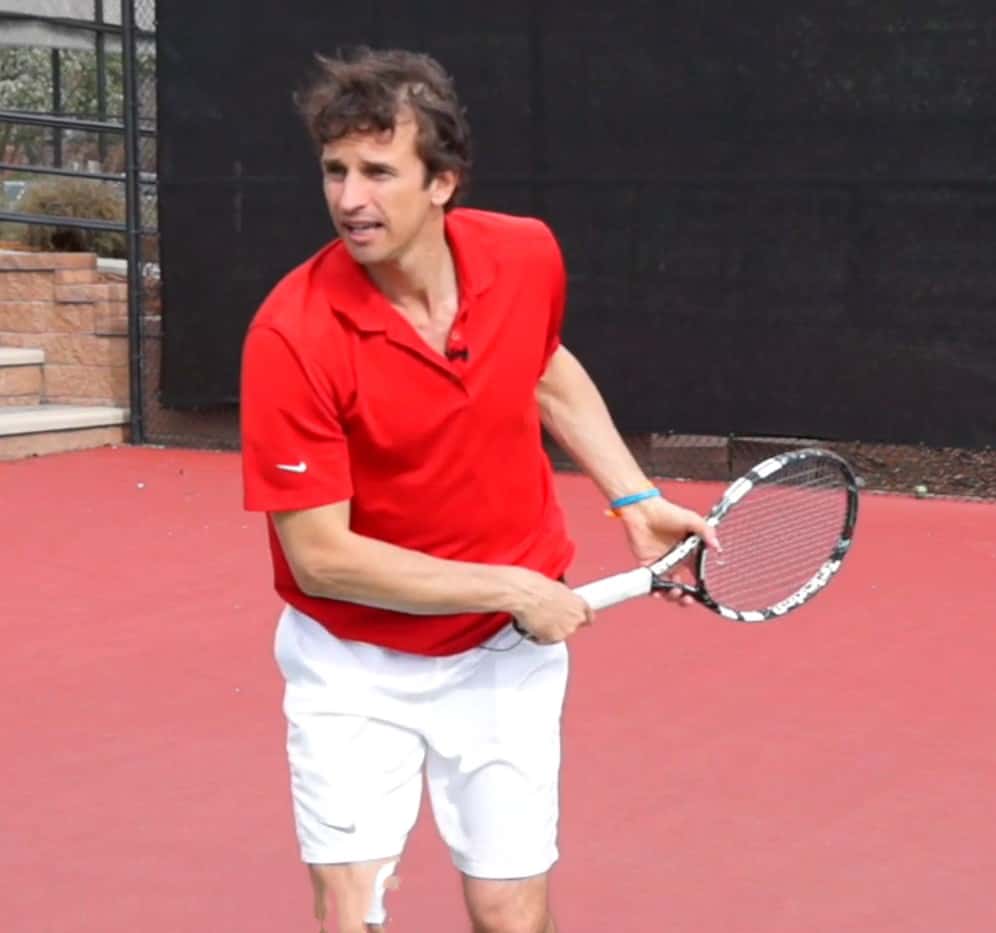
11 Steps To Hit A Perfect Tennis Serve
Photo from Tennis Evolution
Originally Posted On: https://tennisevolution.com/11-steps-to-hit-a-perfect-tennis-serve/
Here you are, searching online to try to figure out how to improve your tennis serve. However, you’re seeing the same information again and again. What you see is really more surface level stuff and leaves you with a tennis serve that is:
- Lacking Power
- Unreliable, causing too many double faults
- Getting attacked by your opponents
Well, let’s change that by digging deeper and uncovering the root causes most players struggle with. Here’s what you’ll get:
- Cutting edge tennis serve tips that you can apply and see results right away!. These are actual tips that I give my 1 on 1 students who pay me $300 an hour.
- Ideas on how you can turn your tennis serve into a reliable weapon giving you effortless power.
- Real results built on a solid, long term tennis serve technique.
What do you have to do?
- Please read this blog post which includes easy to follow video lessons.
- Implement the tips the next time you go on the court and watch your tennis serve improve.
- Rinse and repeat.
Hitting a perfect tennis serve requires consistent practice on and off the court. In fact, the tennis serve is the most complex and important shot in tennis. Therefore, it is essential that you master all of the technical aspects of this stroke.
Developing an efficient tennis serve will allow you to get more free points. Moreover, it will enable you to attack from the first ball, dominate your opponents, and win more matches.
You can follow these 11 steps for hitting the best tennis serves of your life. If you systematically go through the steps below, I guarantee your tennis serve will go to the next level.
Let’s begin,
1) GRIP

Many tennis players have a forehand grip, a common mistake that hinders their tennis serve potential. Thus, they’re unable to swing the racquet along the correct swing path impacting the spin and speed that can be generated.
Ideally, I suggest using a continental grip to develop an elite tennis serve. To find this grip, ensure that your hand is angled and that your index finger is slightly spread on the racquet. This will help you develop control and feel and allow you to feel your hand relax during the swing.
Now, there are slight variations to it, depending on the type of serve you want to hit. For example, you can move your hand slightly to the right, towards the forehand side. This is what I call a strong continental grip, and it will allow you to hit a flatter tennis serve and get more pronation.
On the other hand, you can move your hand towards the backhand side. This type of grip will allow you to easily get more topspin and slice on your tennis serve. However, I recommend you to get a traditional continental grip to start off and build a solid foundation.
2) START
</iframe>”,”tablet”:””}},”slug”:”et_pb_video”}” data-et-multi-view-load-tablet-hidden=”true” style=”box-sizing: border-box; margin: 0px; padding: 0px; border: 0px; outline: 0px; font-size: 14px; text-size-adjust: 100%; vertical-align: baseline; background: 0px 0px; position: relative; display: block; z-index: 1; line-height: 0;”>
In the starting position, you want to have a solid base with your feet firmly on the ground. Your body should be positioned in such a way that your body will face the side fence. Furthermore, your head and eyes will look over your shoulder at your target.
Many players move fast at the beginning and bring their racquet up too early, which throws off their rhythm and timing. Moreover, they have too much tension in their hand and arm. Therefore, I advise you to have a slow tempo at the start of the motion before moving into the acceleration phase of the swing.
Likewise, assure to keep your shoulders down and your arms relaxed as you become aware of how tightly you’re squeezing the racquet. I consider it extremely useful to develop a consistent pre-serve ritual. For instance, you can take a deep breath before you begin your motion and bounce the ball a set number of times before each serve.
3) STANCE

Whether you use a platform or pinpoint serve stance, choose one that you can rely on and will help you feel rhythm. Your feet can be anywhere from one to two feet apart depending on your size and comfort level. You can start your weight on your front foot or back foot depending on what feels most natural.
I personally recommend using a platform stance on your tennis serve. I think that it will help you to improve your disguise, shoulder turn, leg drive, and contact point. Besides, it’ll allow you to use the arm correctly and even get more topspin on your serve.
In fact, some of the best serves of all time like Pete Sampras and Roger Federer use a platform stance. However, there have also been amazing serves with pinpoint stance such as Goran Ivanisevic and the Bryan Brothers.
4) FIRST MOVE
The first move is one of the most important elements of the tennis serve. Most tennis players lack the proper shoulder turn to aid in effortless, efficient serving. When the upper body doesn’t work properly, natural easy power is difficult to come by. Getting more disguise to throw off the opponent is not attainable either.
To perform a solid first move, feel your body, specifically your shoulder turn slightly at the outset. Your tossing arm should be moving ahead of the serving arm. In other words, the serving arm needs to lag or delay behind the tossing arm.
Keep your tossing arm straight and smoothly raise to prepare to release the ball. Your serving arm can be bent or straight during this phase. Thus, you can focus on keeping the racquet face closed as it moves toward the trophy position.
5) TOSS
Even Roger Federer says the toss is important to him. Many tennis players complain that their toss goes all over the place. Developing a consistent toss by learning the best place to locate the ball is critical.
Focus on holding the ball with your finger tips, and keep your wrist neutral as you release the ball. Keep your tossing arm straight and open up your fingers as it’s time to release the ball. Also, make sure that your body is still and you toss the ball from the shoulder.
If you want to hit an amazing tennis serve, become aware of how far out in front and how far left or right the toss goes. Additionally, the toss height is important; thus you need to know how high or low your tennis serve toss should be.
6) OFF HAND AND ARM

The tossing arm stays straight but not completely locked as it moves from the first move to the racquet drop position. Before swinging up to the ball, the tossing arm will be fully extended up towards the sky.
Ideally, keep the palm of your tossing hand facing towards the side fence before exploding up to the ball. This will help you hold the shoulder turn until the last possible moment. The fingers of your off hand should be slightly spread apart in a neutral position to achieve maximum extension.
7) TROPHY POSITION

The trophy position is one of the key elements to master your tennis serve. To get into a perfect trophy pose, reach your tossing arm up to the sky while keeping your serving arm bent at approximately a 90 degree angle.
The racquet face is still closed (it can go vertical at this point) and gathering momentum before the racquet drop phase. The shoulders are turned and the knees are bent and ready to explode up into the ball.
Keep a neutral wrist and slightly push out your hips, instead of curving the lower back. To master this critical serve element, I recommend practicing consistently the trophy position drill at least three times per week.
8) LEGS
Many players try to use their legs to get more power, but they don’t do it correctly. This causes inefficiency with their tennis serve. Keep your legs straight at the start of the motion to establish rhythm. Then, bend your knees at the time you’re bending your elbow.
Having a good knee bend will allow you to release power from the ground up into the ball as you jump. Ensure that your leg drive on the serve is explosive and that you don’t “squat” when you bend your knees.
If you have a platform stance, push off the ground equally between both feet. If you have a pinpoint stance, feel the push off your front leg. Shift your front hip toward the net a little to get your body to go up and forward into the ball. Get your front foot over the baseline after jumping on the serve.
9) RACQUET DROP

This is not a big concept that you want to focus on your tennis serve. First, you’ve got to have the right grip, stance, first move, trophy pose. As a result, the racquet drop will naturally happen. Keep the racquet away from your head and back, and avoid scratching your back.
As you explode upwards with your legs, keep your arm and hand relaxed. Next, get the elbow to lead when you go up to make contact with the ball. This racquet drop occurs if the step before it was correct and in rhythm.
It also helps to have a flexible shoulder. The butt cap of the racket will face towards the sky and the elbow will start to lead up to the ball with the racquet dragging behind. This movement allows you to generate effortless power.
10) CONTACT POINT

Make contact with the ball with your arm extended straight above your body. For a first serve, you‘re most likely to contact the ball above the dominant shoulder. For a second serve, you want to make contact with the ball above your head.
The contact and toss location can vary depending on the type of serve that will be hit, but the arm should always be fully extended. You can make contact with the toss at its peak height or you can actually let the ball drop a little.
Keep your body more sideways and avoid facing at contact. Moreover, keep your head at contact and aim to have full body extension as you make contact with the ball.
Likewise, It’s very important that you develop the correct tempo on your serve to help you with your serve consistency. As mentioned before in step 3, going slow at the beginning is crucial. Thus, you can accelerate up to the contact point.
You want to really accelerate that racquet so that the ball explodes off of the strings. This starts with a smooth, fluid, slower tempo at the beginning. Then, it continues with a gradual building of momentum until the acceleration begins later in the swing. As a result, maximum impact at the contact point and effortless power can be generated.
11) FINISH

The finish is one of the most underutilized facets of the serve. It’s true that the finish can happen naturally as a byproduct of having a good tennis serve technique. You can also put your attention on the finish by making sure your hand gets to the opposite pocket at the end of the swing. Besides, you can put your hand in front of the belly button with a bent arm at the end of the swing.
Curl the wrist a little causing the palm of the hand to face up at the end of swing. Thus, you can add spin and control to the serve. Many players have the ability to jump into the court and land inside the baseline after making contact with the ball. Other players have to step into the court after hitting the serve because they can’t jump.
If you’re jumping, ensure to land with your front leg into the court. Then, kick up your back leg behind to achieve perfect balance on your serve. Regardless, you want to have some upward and forward momentum into the court. Get that body momentum going up and forward in order to hit successful tennis serves.
Bonus Tip
Pronation
Pronation should naturally occur if all the other elements of your tennis serve are correct. You should not have to think about pronation if you have the right grip, technique, and the toss in the correct location. In fact these are the fundamental elements to master pronation on your tennis serve.
After contact, the racquet strings will turn toward the side fence allowing for maximum power into the serve. To feel even more pronation, you can focus on allowing the arm to bend after contact to get the ball to drop into the court.
Most players are unaware of how to fix their serve mistakes. Sometimes making micro adjustments can make all the difference on the next serve that is hit. Players can focus on hitting the serve higher over the net or lower so that it just skims above the net tape. Maybe the next serve needs more spin or cleaner contact with the ball.
The key is to become more aware so that positive changes can be made on the next serve. To summarize, there’s a lot that goes into developing a perfect tennis serve. Now, you can start to practice your tennis serve the right way to get maximum results. Focus on one component at a time and enjoy the process of turning your tennis serve into a weapon.
By Jeff Salzenstein, Founder Tennis Evolution
Jeff is a former top 100 ATP player and USTA high performance coach committed to helping players and coaches all over the world improve.
P.S. – Want to take your serve to the next level? Avoid power leaks on your serve with this little known “elbow the enemy” move. Click here to get instant access.
